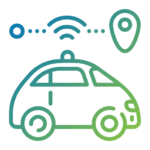In highly automated “softwarized” networks, frequent changes of multiple types (e.g., flow re-routing, service/NFs scaling, migrating, HW heterogeneity, etc.) are likely to introduce new types of issues (e.g., unexpected end-to-end service performance) that cannot be adequately detected by standard monitoring tools (e.g., flow statistics, packet inspection, etc.), risking the SLA fulfillment. Novel means for end-to-end network programmability enabled through SDN & NFV allow for new service assurance approaches based on advanced control loops. Diverse efforts are being devoted within different open-source (e.g. OSM, ONAP) and standardization communities (e.g., ETSI ZSM, TM Forum) to define requirements and architectures for the implementation of monitoring, analysis, planning, and execution principles of autonomous Closed Control Loops (CCLs) leveraging ML/AI [Hulten, 2019]. Identified research includes Advanced monitoring (aka. Data Collection) and SLA verification (aka. Analytics) over the entire lifecycle of services providing observability (aka. Intelligence Loop) for infrastructure and application stakeholders. ML/AI algorithms can be applied to improve the network orchestration actions for end-to-end quality of service assurance [Saraiva de Sousa et al., 2019], fundamentally as perceived by end-users QoE.
Examples of highly QoE sensitive and network QoS demanding services are real-time applications in the context of the Internet of Vehicles (IoV) [Yang et al., 2014] involving different technologies such as navigation systems, mobile communication, and sensor networks for information exchange and control systems. Very demanding IoV application scenarios relate to high-speed moving vehicles running AR services on car windshields as an interactive application, improving the user’s driving experience and safety. Edge computing facilities provide the required resources to process and deliver information/data from/to vehicles enabling low-latency complex IoV applications.







